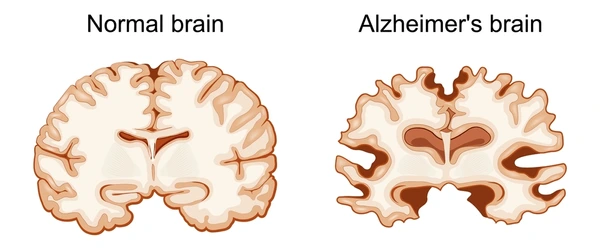Recent research breakthroughs have illuminated the intricate role of RNA in the development of Alzheimer’s disease, providing fresh insights and potential treatment avenues. Two groundbreaking studies, one from Northwestern Medicine and another from UK-based researchers, delve into the molecular mechanisms that contribute to brain cell death and DNA damage in Alzheimer’s patients.

RNA Interference: A Key Player in Alzheimer’s Onset
Northwestern Medicine’s study, led by Dr. Marcus Peter, Tom D. Spies Professor of Cancer Metabolism, reveals a significant connection between RNA interference and Alzheimer’s disease. The researchers identified short strands of toxic RNAs that actively contribute to brain cell death and DNA damage in Alzheimer’s and aged brains. These toxic RNA strands play a crucial role in the neurodegenerative process, leading to the development of Alzheimer’s disease.
The study also unveiled a compelling correlation with ‘SuperAgers,’ individuals aged 80 and older with exceptional memory capacities. SuperAgers exhibited higher amounts of protective short RNA strands in their brain cells, providing a potential avenue for understanding resilience against Alzheimer’s.
P460L Variant: Unraveling the Immune Attack and Blood-Brain Barrier Connection
In a parallel study conducted by researchers from Cardiff University and the University of Bristol in the UK, a genetic variant named P460L took center stage. This variant, associated with a protein-modifying enzyme, EphA1, was linked to an increased risk of late-onset Alzheimer’s. The study explored how P460L interferes with EphA1, impacting immune cell recruitment and influencing inflammation in the brain.
The findings suggest that P460L disrupts EphA1 activity, affecting T cells and compromising the blood-brain barrier. This dual impact could contribute to brain cell damage in Alzheimer’s, offering a new perspective on the immune system’s role in the disease.
Implications Beyond Alzheimer’s: RNA’s Role in Neurodegenerative Diseases
Dr. Marcus Peter, from Northwestern Medicine, emphasizes that the discoveries extend beyond Alzheimer’s, shedding light on why neurodegenerative diseases gradually manifest as cells lose their protection with age. The researchers propose that stabilizing or increasing the levels of protective short RNAs in the brain could be a novel approach to halt or delay Alzheimer’s and neurodegeneration in general.
Towards New Treatments: RNA-Based Therapies
Both studies pave the way for potential new treatments. Dr. Peter suggests that drugs stabilizing or increasing the amount of protective short RNAs in the brain could be a groundbreaking strategy. While such drugs already exist, further testing in animal models and improvements are necessary before clinical application.
The next steps involve determining the exact contribution of toxic sRNAs to cell death in different models and screening for compounds that selectively increase protective sRNAs or block toxic ones. This research not only holds promise for Alzheimer’s but also for other complex neurodegenerative diseases like ALS and Parkinson’s.
Conclusion: A Paradigm Shift in Alzheimer’s Research
The recent discoveries in RNA interference and genetic variants challenge the predominant focus on amyloid plaques and tau proteins in Alzheimer’s research. The intricate interplay between protective and toxic short RNAs provides a fresh perspective and opens doors to innovative treatments. As researchers delve deeper into the RNA landscape, the potential for groundbreaking interventions offers hope for a future where neurodegenerative diseases may be better understood and effectively treated.
